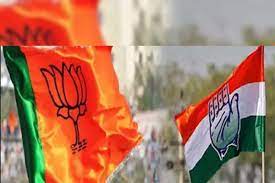Lucknow. The German economist EF Schumacher once said a few decades ago, ‘smaller is better’. The notion of ‘bigger being better’ is challenging. By the way, Schumacher had said this in the context of the economy and it has been used for technology. But these days this proverb seems to be realizing in the Uttar Pradesh assembly elections as well.
Every major party in Uttar Pradesh seems eager these days to form an alliance with smaller parties, but why? To find the answer to this, we have to look at the journey of the backward castes in India so far. The Mandal Commission report is the chapter to which the strings of this matter are connected. Its implementation is a turning point in the politics of India. It gave an opportunity to the politics of social justice to flourish and provided the self-confidence to many backward communities to join mainstream politics. If anything matters in a democracy, it is numbers, which is why numerically powerful castes and communities have dominated the politics of social justice in India for the past three decades. Yadavs, Kurmis are such influential castes among the backward communities, which claim a large share of powerful politics in democratic politics.
After some time, some other backward and most backward castes, which had a decent population, started making their place in politics, as far as dominance is concerned, they still do not have the power of Yadav or Kurmi. But their claim stems from being marginalized and marginalized in politics as well as social and economic development. These include castes like Nishad, Kori, Rajbhar.
Over time, the leaders of these communities have managed to win over their people, which they use to carve out a niche for themselves in the larger party. The reason for the emergence of caste parties in states like Uttar Pradesh and Bihar becomes clear from this.
These political parties promise big parties that they will get full support of their caste fraternity. Be it Bharatiya Janata Party (BJP), Samajwadi Party (SP) or Congress. All of them are forming alliances with them, especially during the elections, it has gained momentum. However, interestingly, the Bahujan Samaj Party (BSP) led by Mayawati generally vehemently denies forming alliances with smaller caste parties in Uttar Pradesh.
These small parties need a ministerial post or a strategic seat in the government in return for their support. Along with this, the demand for democratic benefits to the people of their caste and community is also kept in the development projects. In this way, the votes of the supporters of these small caste parties act as stepney votes, because on their own their candidate’s victory cannot be ensured, but when they join with the big party, they take out some seats. And later when the matter gets stuck, the supporters and leaders of these small parties call themselves kingmakers.
Sanjay Nishad, who heads the Nishad Party, claims the support of his community. On the other hand, Keshav Dev Maurya, the leader of the great party, claims that Maurya, Shakya, Saini and Kamboj are with them. Similarly, Suheldev Bharatiya Samaj Party leader Om Prakash Rajbhar claims that the entire Rajbhar caste is with him.
Akhilesh Yadav-led Samajwadi Party, popularly known as the Muslim-Yadav party, is keen to join hands with smaller parties in the 2022 elections. Recently, SP has announced to join hands with Mahan Dal and Suheldev Bharatiya Samaj Party.
The voters of SBSM are mainly Rajbhar, which is not more than 2 percent of the population of Uttar Pradesh. They are mainly confined to some districts of Madhya Uttar Pradesh and Northern Uttar Pradesh. SP is expected to grow in these districts.
Similarly, Maurya, Kushwaha, Shakya, Saini hold a hold in at least 10 districts of Uttar Pradesh. The strategy of the Samajwadi Party is to gain the support of these castes, while also hoping to retain its traditional Muslim-Yadav vote back. It is clear from this that why small is better in Uttar Pradesh these days. And every major party has an eye on it.
 Indian Thought Latest News & Views
Indian Thought Latest News & Views
